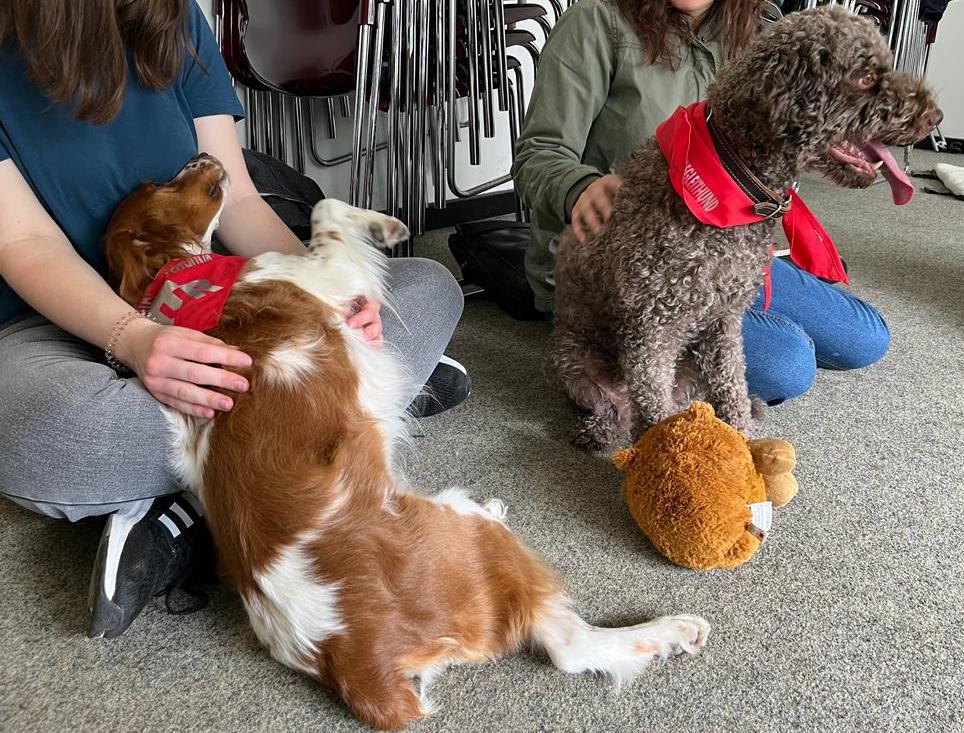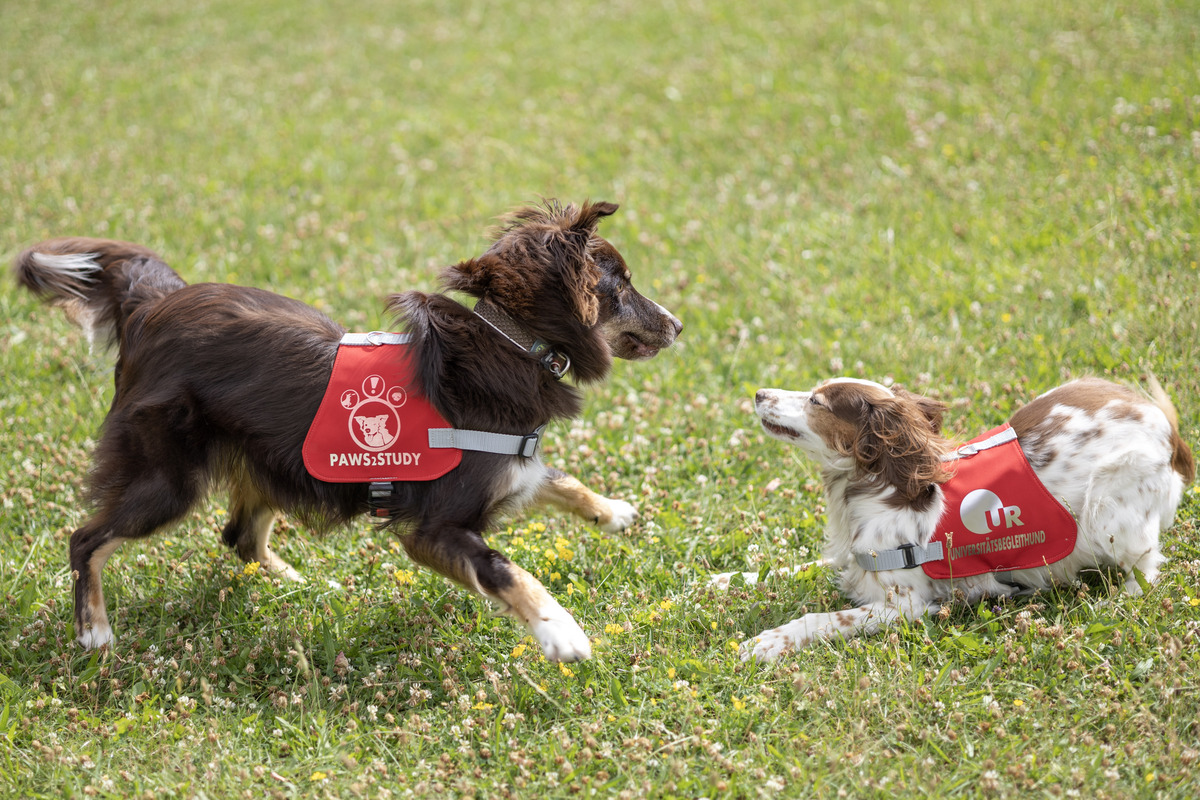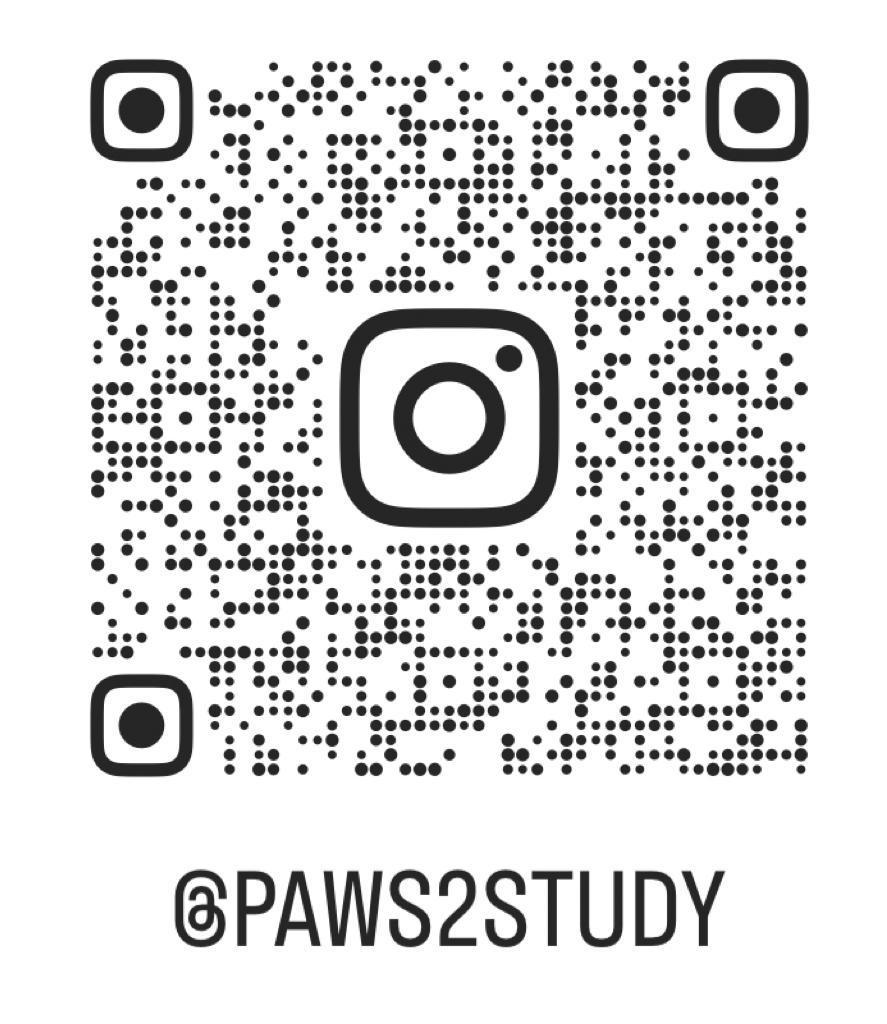Know that feeling when everything’s just getting too much? When the thought of everything you have to do causes pressure and tension? A lot is required of both students and staff at universities. And we don’t always feel up to requirements. This results in stress. To provide assistance with this, Prof. Dr. Schworm and her team have introduced an innovative project for the University of Regensburg – Paws2Study. The idea is for the well-being of students and staff to be improved with the help of animals.
Stress and psychological strain in your studies
Students repeatedly face challenges in their day-to-day lives at university. Moving away from home, planning their lives as independent adults or rising academic pressure can mean a high level of stress (Henderson et al., 2018). On top of that, students are confronted daily with critical global changes like the COVID-19 pandemic, the rising cost of living and fear of the future (Techniker Krankenkasse, 2023). It primarily seems to students’ mental health that suffers as a result of these challenges. According to the TK health report from 2023, 68 per cent of the students questioned were exhausted by stress, compared to only 44 per cent in 2015. Seventy per cent of the students reported suffering from worry and anxiety in 2023 (Techniker Krankenkasse, 2023).
These alarming figures are motivating universities to provide students with suitable offerings to help them cope with the stress. That’s why animal-assisted intervention is already being employed frequently in Canada and the USA.
Positive effects of dogs on campus
The idea of animal-assisted intervention at universities is far more than a temporary trend, however. The positive effects of it have already been proven scientifically. Animal-assisted interventions at universities can lead to increased well-being and reduced stress, among other things (Rothkopf & Schworm, 2023; Sokal et al., 2021).
The hormone oxytocin is particularly released in people when they stroke a dog (Beetz et al., 2012). That doesn’t just apply to humans, however – it can also be released in dogs when they are touched (Wohlfarth & Mutschler, 2016). Oxytocin is also known as the “cuddle hormone”, and one of the things it does is to counteract the stress hormone cortisol, thus ensuring that fear is reduced (Guastella et al., 2009) and stress is relieved (Heinrichs et al., 2003), for example.

Animal-assisted therapy sessions with Lakota, Romeo and co.
Animal-assisted interventions are still quite a rarity at German universities. With their “Paws2Study” project at the university in Regensburg, Professor Schworm and her team have introduced what are the first animal-assisted therapy sessions at a German university as far as we know. They are regularly offered for students and staff at the University of Regensburg during the semester.
During a one-hour session, anyone interested has the opportunity to interact freely with a trained university therapy dog without having to book first. That means you can do tricks with them, play sniffing or tugging games or simply stroke the dog. There are always different human-dog teams present during the sessions. The dogs assigned bring their own personalities to the sessions: some like things to be a bit calmer, liking it most when they are stroked the entire time, while others are more active and like to play with the students. The team also varies widely as regards size and breed, with breeds ranging fromAustralian Shepherds to miniature poodles, hypoallergenic breeds and mixed breed rescue dogs being in action. So there’s something to meet every need. No matter whether they are furry, short-haired, playful or quiet – the dogs at the animal-assisted therapy sessions are unique, and bring joy and a sense of calm to the students during their stressful day-to-day lives at university. Even if the dogs are obviously enjoying the interaction and the stroking, however, the teams are changed after 20 minutes, as the activity should remain stress-free for the dogs as well.

Stress-free dogs – Why is the focus on the dog’s well-being as well?
Even though the project focuses on the positive effect the dogs have on the students, attention is also paid to the dogs’ well-being at all times. Not every dog is suited to work like this in close connection to human beings or to interacting with people it does not know. It is therefore important for only suitable dogs to be in action and for the handlers to be trained accordingly. We – Professor Schworm and her colleague Felina Dinçer – are lecturers and mentors on a therapy dog training course (AG Mantrailing, Rettungshundestaffel & Therapiebegleithundezentrum). Furthermore, everyone involved in the project has completed a training course related to animal-assisted interventions together with their dogs. The dog handlers are trained to read their dogs’ body language and facial expressions. While the dogs are in action, they always pay attention to signs of stress or unease in their dogs and end the session with their dog early if necessary. Only dogs that feel at ease themselves can be good helpers for the students too. That’s why all dogs are tested for their aptitude during the training course, and regular supervision and intervision are a fixed component of quality assurance.
After a service assignment, the dogs need a break – ideally a romp around with other dogs they are friendly with – in order to release any tension that may have built up.

Paws2Study – individual sessions for students
In addition to the animal-assisted therapy sessions, the Paws2Study team also offer individual sessions for students. For this purpose, the team work together with the Counselling Service for Mental Health and the University of Regensburg Counselling Service for Learning Issues. During these individual sessions, the students can interact with a dog in a one-on-one session to reduce feelings of homesickness a little, for example. Here, a session is arranged with one of the human-dog teams. Students also drop by just before their exams to distract themselves and relieve stress before the coming exam by going for a walk with the dog or having a cuddle with it. On request, the human-dog team will accompany the students all the way to the examination hall so that the students can stroke the dog again just before the exam. Together, my dog Lakota and I have already accompanied several students with exam nerves. Lakota has a calming effect and distracts the students just before the exam. What is important to mention here is that this project neither can nor should replace psychotherapy. These individual sessions are offered in order to relieve stress through an animal-assisted activity.

Interested?
Do you have the feeling that animal assistance would do you good and help you cope with current challenges a bit better? You’re welcome to come to one of our animal-assisted therapy sessions next semester or arrange a date for an individual session at Tierisch.denken.lernen@ur.de.
Follow us on Instagram:

References
Beetz, A., Uvnäs-Moberg, K., Julius, H., & Kotrschal, K. (2012). Psychosocial and psychophysiological effects of human-animal interactions: the possible role of oxytocin. Frontiers in Psychology, 3(234). https://doi.org/10.3389/fpsyg.2012.00234
Guastella, A. J., Howard, A. L., Dadds, M. R., Mitchell, P., & Carson, D. S. (2009). A randomized controlled trial of intranasal oxytocin as an adjunct to exposure therapy for social anxiety disorder. Psychoneuroendocrinology, 34(6), 917-923. https://doi.org/10.1016/j.psyneuen.2009.01.005
Heinrichs, M., Baumgartner, T., Kirschbaum, C., & Ehlert, U. (2003). Social Support and Oxytocin Interact to Suppress Cortisol and Subjective Responses to Psychosocial Stress. Society of Biological Psychiatry, 54(12), 1389-1398. https://doi.org/10.1016/S0006-3223(03)00465-7
Henderson, L., Thompson, K., Hudson, A., Dobson, K., Chen, S.-P., & Stewart, S. (2018). An analysis of campus culture, mental health, and drinking at three Canadian universities. Canadian Journal of Community Mental Health, 37(3), 97–113. https://doi.org/10.7870/cjcmh-2018-013
Rothkopf, C., & Schworm, S. (2021). Exploring dog-assisted interventions in higher education: Students’ attitudes and perceived effects on well-being. International Journal of Environmental Research and Public Health, 18(9), 4492. https://doi.org/10.3390/ijerph18094492
Sokal, L., Bartel, B., & Martin, T. (2021). Effects of Touch on Students’ Stress, Happiness, and Well-Being During Animal-Assisted Activities. Journal of Education and Development, 5(1), 111-122. https://doi.org/10.20849/jed.v5i1.887
Techniker Krankenkasse. (2023). Gesundheitsreport 2023. https://www.tk.de/resource/blob/2149886/e5bb2564c786aedb3979588fe64a8f39/2023-tk-gesundheitsreport-data.pdf
Wohlfarth, R., & Mutschler, B. (2016). Praxis der hundgestützten Therapie: Grundlagen und Anwendung. Reinhardt.
Suggestion for citation of this blog post
Dinçer, F. (2024, September 12). Paws2Study: Paws for relaxation on campus with animal-assisted therapy sessions. Lehrblick – ZHW Uni Regensburg. https://doi.org/10.5283/ZHW.20240912.EN

Felina Dinçer
Felina Dinçer is a research assistant and PhD student at the Institute of Educational Studies at the University of Regensburg. The focus of her research and teaching is on animal-assisted intervention, particularly animal-assisted coaching in the field of higher education and also self-regulated learning in large-scale lectures.
She is a systemic business coach and lecturer/mentor at “Arbeitsgemeinschaft Mantrailing – Rettungshundestaffel & Therapiehundezentrum”.





